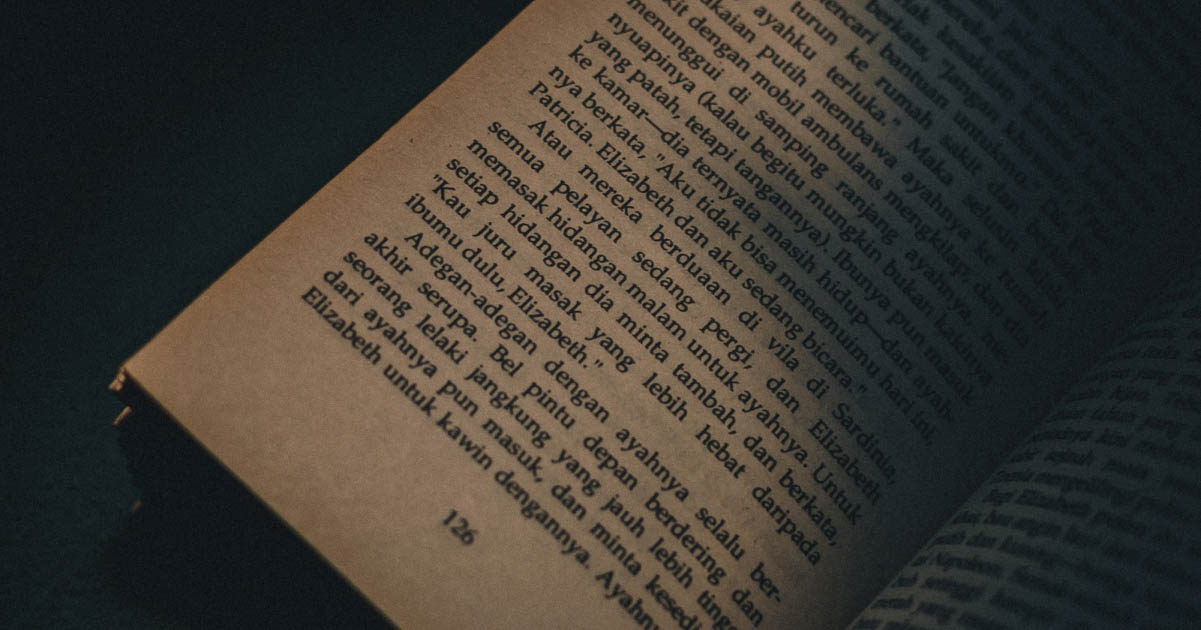
Narrative Structure: What Are the 7 Basic Plots?
Often, the aim of narrative theory is to identify common plots that are used in many stories. One of the most well-known attempts in recent years is Christopher Booker’s 2004 book The Seven Basic Plots: Why We Tell Stories.
In this book, Booker proposes that any story will follow one of seven different plots:
- Overcoming the Monster. The protagonist must defeat an antagonist (usually an individual, force, or entity) that threatens them and the wider world.
- Rags to Riches. The protagonist achieves something they lack, loses what they’ve gained, and then gets it back again.
- The Quest. The protagonist must set out in pursuit of a treasure, place, or other goal, overcoming challenges along the way.
- Voyage and Return. The protagonist travels to a strange new place, experiences hardships, and makes discoveries, and then they return home with the lessons they have learned.
- Comedy. The protagonist experiences a series of lighthearted or confusing events, then the story resolves into a happy ending.
- Tragedy. The protagonist has a central trait or flaw or makes a mistake, which results in catastrophe.
- Rebirth. The protagonist undergoes a transformation, and they often end up a better person as a result.
Understanding these archetypal plots can be helpful when editing creative writing, as it will help you identify common plot tropes and assess how well they have been used.
In the rest of this post, we’ll look at Booker’s basic plots in more detail.
1. Overcoming the Monster
This first basic plot is a staple from fantasy to crime fiction, and it is found in famous works including:
- Bram Stoker’s Dracula
- Thomas Harris’s Red Dragon
- H.G. Wells’s War of the Worlds
In this plot, the “monster” can be a literal creature of evil, a human being, or a more metaphorical force that must be overcome, such as an illness or aggressive ideology.
Whatever form the monster takes, however, it should pose more than just an immediate physical threat to the protagonist. In Dracula, for example, the titular vampire is after more than just the protagonist’s blood. The Count plans to expand his territory to England, where he will have access to thousands more victims and threaten the whole modern world.
One way to tell if your client has successfully written an “Overcoming the Monster” plot is by asking the following questions:
- What (or who) is the monster?
- How is the monster defeated?
- What does overcoming the monster achieve?
If the answers to these questions are too one-dimensional, you might suggest that your client revisit the central elements of their plot.
2. Rags to Riches
The fairy tale Cinderella might be the first thing this plot brings to mind, but it is used in a wider variety of stories than you might expect. Other famous examples include:
- Charles Dickens’s Oliver Twist
- Louis Sachar’s Holes
- Charlotte Bronte’s Jane Eyre
As with the previous plot’s “monster,” the “riches” here don’t necessarily have to be literal money. Instead, this term can refer to anything the protagonist originally lacks, such as wealth, freedom, or something else entirely.
The key with this plot is that it’s not a simple case of a protagonist magically gaining whatever they need for a happy ending. There must be challenges involved, and the protagonist must adjust so they can successfully live with their newfound riches.
Often, the initial “riches” are obtained in a way beyond the protagonist’s control (such as with the help of a fairy godmother), while the final return to wealth and happiness is achieved through their own agency.
As such, you should make sure your client has introduced enough conflict and character growth into a “Rags to Riches” story to make it a satisfying read.
3. The Quest
The works of J.R.R. Tolkien are perhaps the most well-known examples of this plot, but other famous quest stories include:
- Michael Ende’s The Neverending Story
- Ursula K. LeGuin’s A Wizard of Earthsea
In this type of story, the stakes should gradually ramp up as the narrative proceeds, before the protagonist finally achieves the goal they set out to obtain.
This means you should make sure your client has properly paced their story, introducing hurdles with increasing speed as it reaches its climax.
“Quest” plots also tend to rely on a fleshed-out cast of supporting characters more than other stories (think of Tolkien’s Fellowship of the Ring). In addition to aiding the hero on their quest, these characters may face their own challenges separate from those of the protagonist.
If your client’s plot follows this storyline, pay close attention to how many supporting characters there are and whether they are used effectively.
4. Voyage and Return
This plot is very similar to “The Quest,” but with one crucial difference: rather than ending when the quest has been completed, it follows the protagonist’s journey home as well.
You can see examples of this plot in:
- Lewis Carroll’s Alice’s Adventures in Wonderland
- C. S. Lewis’s The Lion, the Witch, and the Wardrobe
- Madeleine L’Engle’s A Wrinkle in Time
As with “The Quest,” this plot structure should make use of rising action, building tension as it progresses. Then the falling action, described in Freytag’s pyramid, should introduce further challenges before the protagonist can head back home.
Putting the most dramatic scenes only in the “Voyage” half can disrupt the flow of this structure, so you may want to highlight this with your client as a potential issue.
It’s also important to remember that the “Return” doesn’t mean a return to the status quo of the beginning of the story. The protagonist should be changed by their journey, whether that change is physical, mental, or emotional, and should bring that new knowledge or ability home with them.
5. Comedy
The term “Comedy” here refers to a story that’s not only humorous, but that also follows a specific structure.
Characters in this plot experience a series of increasingly bizarre events, mistakes, or problems. Then, at last, the misunderstandings of the story are resolved in one final clarifying moment. In Shakespeare’s A Comedy of Errors, for example, the characters learn that recent strange events were caused by the presence of two sets of twins in their midst.
Shakespeare produced many of the classic “Comedy” stories, but others include:
- Helen Fielding’s Bridget Jones’ Diary
- S. Morgenstern’s The Princess Bride
“Comedy” plots should end in a resolution that clears up the confusion that has preceded, and their endings are usually happy as well. However, while these stories are generally lighthearted, remember that challenges and conflict are as important here as with any other narrative.
And while this plot relies on the ridiculous and the surreal, these elements should be balanced with more mundane and everyday circumstances. It’s important to keep this balance in mind when editing these stories.
6. Tragedy
The “Tragedy” plot is the reverse of the “Comedy.” The protagonist moves from a generally positive or successful point to one of failure or loss, suffering increasing hardships because of their decisions before their ultimate demise.
Famous tragedies include:
- Shakespeare’s Romeo and Juliet
- Oscar Wilde’s The Picture of Dorian Gray
While this plot relies on a central mistake or character flaw, it’s important to remember that the protagonist of a tragedy doesn’t necessarily have to be unlikable. In fact, a protagonist that the reader can relate to is more likely to evoke the emotional response that tragedies rely on.
It’s also crucial that the characters are provided with a way out of the impending tragedy, yet choose not to take it.
If your client hasn’t written any potential escape routes for their characters, the impact of the tragedy is lessened, as it becomes less about the choices characters make and more about the inevitable consequences.
7. Rebirth
“Rebirth” plots focus on the development of a character and their subsequent transformation.
Stories that follow this structure can be fairy tales that feature a literal transformation, like Beauty and the Beast, or works that address a character’s morality, such as:
- Dr. Seuss’s How the Grinch Stole Christmas
- Charles Dickens’s A Christmas Carol
At the start of the story, the protagonist is affected by a negative force, power, or belief. They then experience several setbacks on their journey towards redemption, such as giving in to temptation or struggling with the choices they need to make.
Ultimately, the ending is a happy one, but this outcome must depend on the protagonist consciously choosing to change for the better.
Your client’s writing should make clear what the change that triggers the transformation is – if the protagonist achieves their rebirth without having to work for it, you should flag this as an issue.
Of course, you’ll find some stories that contain elements of many of the seven basic plots, and you should never force your client’s work to fit one narrative mold. But knowing what to expect from these common plots can help you better assess the writing you edit.
Becoming an Editor
Our Becoming An Editor course covers everything you need to start a career editing creative writing, from basic narrative theory to character arcs and literary devices.
You can sign up for a free trial, or buy it as a bundle with our Becoming A Proofreader course to save 15%.





Your email address will not be published.